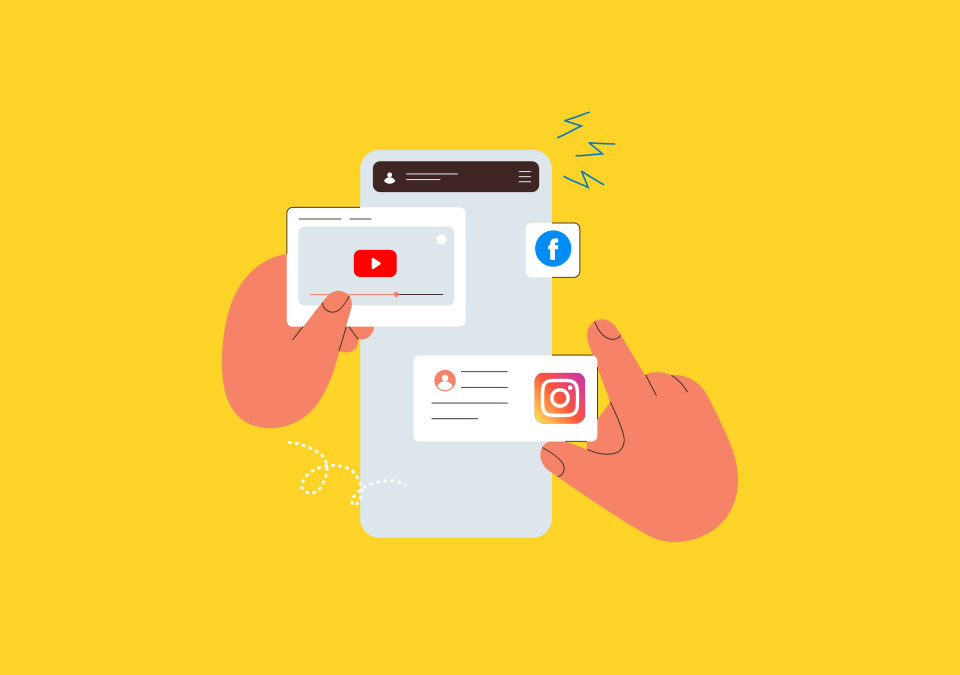The Role of Infographics in Marketing: How to Use Them to Boost Your Brand

Categories:
Visual MarketingTags:
Visual MarketingIn simple terms, infographics are like “one picture worth a thousand words.” The main purpose of infographics is to make the content easy to consume for readers.
No one likes to read lengthy paragraphs; infographics make the content engaging and quick to digest; they have a way of captivating the your attention with the use of attractive colors and typography while keeping your attention hooked and your brain craving for more knowledge.
Why are Infographics Highly Effective
Sometimes images alone lack vital information, and words are more time-consuming to process. This is where digital marketing infographics are a blessing in disguise for brands and marketers. By targeting the right audience with the right content strategy infographic, your brand can go viral in no time and will get everyone gushing about it on the web.
But in this ever-evolving digital world, how do you create attention-grabbing infographics to keep your audience awaiting for more?
That’s why we combined a list to create digital marketing infographics that will be relevant to Google and your customers.
How to Create Compelling Digital Marketing Infographics
Keep it Simple and to the Point
Creating an engaging infographic is tricky because you have to balance the content and graphics. You don’t want to confuse your readers with a messy design, but at the same time, you don’t want to give them all the details in a tedious way.
The trick is to break down each concept into compartments and then use attractive visuals. This way, your readers can easily digest all the information and actually understand what your brand is trying to convey. With a marketing infographic, you can make how-to content easy to understand.
Make Complicated Topics Understand Visually
Visuals are an incredibly powerful tool when it comes to learning and understanding complex subjects. Whether it’s a graph, chart, diagram, or even a simple doodle, visual aids can help break down information into smaller, more manageable chunks that are easier to digest.
So the next time you find yourself struggling to understand a tricky concept, try creating a visual representation of it – you might be surprised at how much easier it becomes to comprehend!
Converting Statistics into Visual Content
By transforming statistics into charts, graphs, and infographics, you can take what might otherwise be a dry and boring set of data and turn it into something engaging and informative.
Visualizing statistics will also help you spot trends and patterns that might not be immediately apparent from a list of numbers. Plus, it’s a great way to add some visual interest to reports, presentations, and other types of content.
Add a Call to Action
If you are promoting your brand or service, then your marketing infographic is incomplete without a click-bait call to action. Without that, your infographic is just a pretty picture with no real purpose.
How to Incorporate Infographics in Your Digital Marketing Strategy
Blog Posts
An excellent way to break up long blocks of text and make your blog posts more visually appealing is via digital marketing infographics. This way, you can illustrate data, provide step-by-step instructions, or explain detailed concepts in an easy way.
This will make your content more engaging and easier to understand, which can help keep readers on your site longer.
Social Media Posts
Whether you’re posting on Instagram, Facebook, Twitter, or any other platform, infographics can help you stand out in the crowded social media landscape, which is full of complex images.
With a social media marketing infographic, you can share interesting statistics, industry trends, or helpful tips and tricks that your audience will find valuable.
Email Marketing
You can use infographics to highlight the key points of your message, illustrate a process or workflow, or provide a visual representation of your data. By including infographics in your email marketing campaigns, make your messages more engaging and increase click-through rates.
Landing Pages
On the landing pages, infographics can be used to illustrate the benefits of your product or service, explain a complicated pricing structure, or provide a visual representation of your sales funnel. This will leave a distinct impression on your brand.
Suppose you offer SEO services, then your infographics for SEO could include before-and-after examples of websites that you’ve helped improve in search rankings
Conclusion
Infographics are very handy when it comes to explaining complicated stuff about your business, brand, or just some topic you’re into. They’re super eye-catching with cool pictures and quick bits of text, and they’re still one of the best ways to get your message across on the internet.
And guess what? You don’t even need to be a design expert to make a dope infographic for your brand. There are tons of online tools like Canva and Easel.ly that can help you create amazing graphics!





